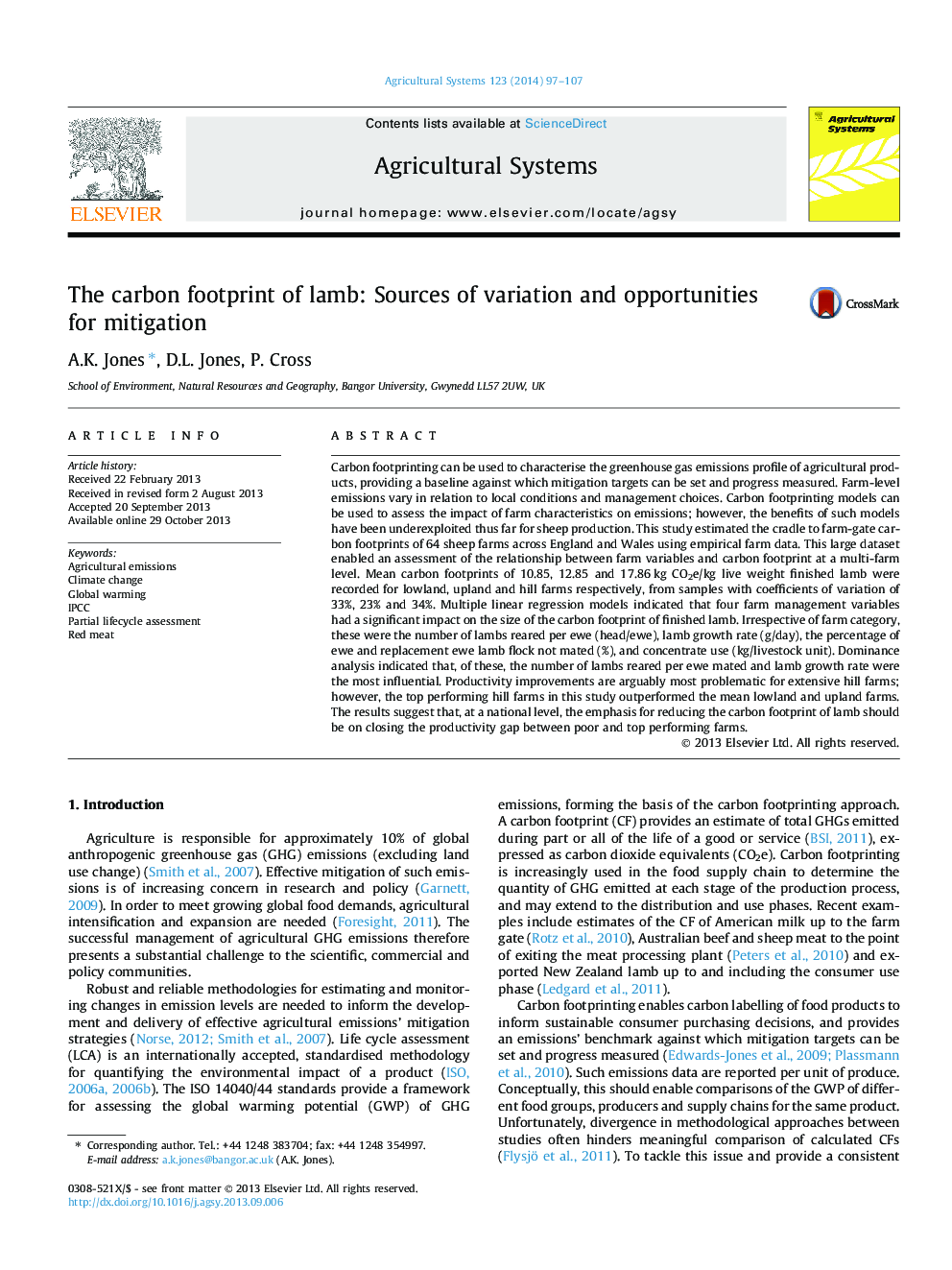| کد مقاله | کد نشریه | سال انتشار | مقاله انگلیسی | نسخه تمام متن |
|---|---|---|---|---|
| 4491270 | 1623247 | 2014 | 11 صفحه PDF | دانلود رایگان |
• Cradle to farm gate carbon footprints were estimated for 64 sheep farms.
• Mean footprint per kg lamb: lowland 10.85, upland 12.85, hill 17.86 kg CO2e.
• Use of empirical data enabled assessment of variation in emissions between farms.
• Four farm variables had a significant relationship with footprint size.
• Maximising productivity is pivotal for mitigating sheep farm emissions.
Carbon footprinting can be used to characterise the greenhouse gas emissions profile of agricultural products, providing a baseline against which mitigation targets can be set and progress measured. Farm-level emissions vary in relation to local conditions and management choices. Carbon footprinting models can be used to assess the impact of farm characteristics on emissions; however, the benefits of such models have been underexploited thus far for sheep production. This study estimated the cradle to farm-gate carbon footprints of 64 sheep farms across England and Wales using empirical farm data. This large dataset enabled an assessment of the relationship between farm variables and carbon footprint at a multi-farm level. Mean carbon footprints of 10.85, 12.85 and 17.86 kg CO2e/kg live weight finished lamb were recorded for lowland, upland and hill farms respectively, from samples with coefficients of variation of 33%, 23% and 34%. Multiple linear regression models indicated that four farm management variables had a significant impact on the size of the carbon footprint of finished lamb. Irrespective of farm category, these were the number of lambs reared per ewe (head/ewe), lamb growth rate (g/day), the percentage of ewe and replacement ewe lamb flock not mated (%), and concentrate use (kg/livestock unit). Dominance analysis indicated that, of these, the number of lambs reared per ewe mated and lamb growth rate were the most influential. Productivity improvements are arguably most problematic for extensive hill farms; however, the top performing hill farms in this study outperformed the mean lowland and upland farms. The results suggest that, at a national level, the emphasis for reducing the carbon footprint of lamb should be on closing the productivity gap between poor and top performing farms.
Journal: Agricultural Systems - Volume 123, January 2014, Pages 97–107
